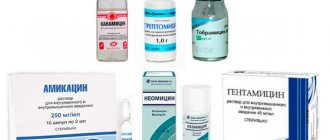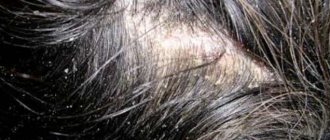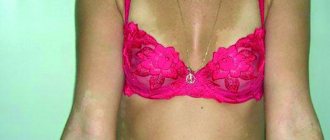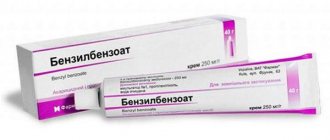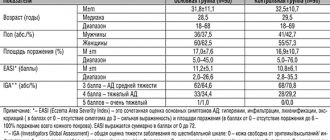Topical therapy for skin diseases
N
It is impossible to imagine the treatment of dermatoses without the use of external agents. In some cases, they become of paramount importance, which is why it is so important to navigate the sea of medications that are constantly arriving on the market.
General principles for the use of external agents
Before carrying out external treatment, it is necessary to take into account the stage of the disease, the age of the patient (children, as a rule, are prescribed less irritating drugs in lower concentrations), and tolerability of the drug.
The effect of external treatment is more pronounced if the therapy is carried out comprehensively.
Powders
have a cooling effect on the skin, resulting in calming of burning and itching. During macerations from exposure to sweat, urine, and skin hyperemia, they also have a good effect. Powders are based on plant or mineral powders.
Aqueous solutions of medicinal substances are most often used in the form of lotions, wet-dry dressings and warm compresses
.
A piece of gauze folded in 4-5 layers and soaked in a cooled solution is applied to the affected area of skin. As it warms up, every 15-20 minutes, it is moistened again. This procedure lasts 1-1.5 hours, after which you should take a break for 1-2 hours. Due to the evaporation of water, the lotions
sharply cool the skin and cause a narrowing of blood vessels. This allows the use of lotions for acute inflammatory skin lesions, severely hyperemic, with swelling and weeping.
| Lotions reduce burning, itching and maceration phenomena |
A wet-drying dressing
is applied as follows: gauze folded in 4-5 layers, soaked in an appropriate solution, is applied to the affected area of the skin, covered with a thin layer of absorbent cotton wool and bandaged. The dressing is changed as it dries (usually after 3-4 hours), the slowly evaporating liquid cools the skin, like a lotion, only less actively, helps to subside the symptoms of acute inflammation, which is indicated in the treatment of subacute inflammatory processes accompanied by weeping. Depending on the medications included in the lotion, it has an astringent, disinfectant, drying effect, and in general an anti-inflammatory effect.
Warming compresses
act on the skin with moist heat and are used mainly in the treatment of chronic inflammatory processes. By causing active hyperemia, they increase metabolic processes in the affected area of the skin and help resolve the inflammatory infiltrate.
In addition, various antipruritic, antimicrobial and fungicidal solutions, which can be aqueous or alcoholic, are used externally. Alcohol solutions include solutions of boric and salicylic acids, resorcinol, lapis, iodine, aniline dyes, etc. Ethyl alcohol can cause skin irritation and have an astringent effect, which leads to drying, so its most desirable concentration is 70%.
Shaked suspensions, or “chatterers”
, are used for inflammatory and acute inflammatory (non-wetting) skin diseases (eczema, dermatitis, itchy dermatoses, etc.). Before use, they should be shaken to evenly mix all the ingredients - fine powdery substances that are suspended in water with oil or glycerin. The liquid part of the mash evaporates soon after lubricating the skin with it, and the powdery substances are deposited in a thin layer and are retained on it for a long time. In most cases, chatter is prescribed in equal parts - talc, zinc, glycerin and distilled water when a surface effect is needed. More liquid (up to 50-60%) is added to obtain a cooling effect and, conversely, 20-40% of liquid is taken to create a protective film on the skin. If the patient has dry skin or long-term exposure to the drug is required, it is recommended to prescribe oil suspensions. To speed up drying and enhance the effect, up to 10% alcohol or ichthyol, sulfur, menthol, anesthesin, tar, etc. are usually added to the “talkers”.
Pastes
used when there is a serous crust on the skin (in patients with eczema), for hyperemia (in patients with dermatitis), etc. The paste consists of equal parts of powder and fatty bases, has a dough-like consistency, and penetrates deeper into the skin than powders and mash. Depending on the composition (naftalan, sulfur, tar, lanolin, petroleum jelly), it acts as a cooling, softening and anti-inflammatory agent. The paste protects the skin well against abrasions after acute inflammatory phenomena have subsided.
Ointments
can be official (sulfuric, ichthyol, naphthalan, etc.) or prepared in a pharmacy according to a prescription. Animal and vegetable fats, oils, petroleum jelly, lanolin are usually used as a base, with the addition of various medicines. Ointments can be exfoliating, itching, epithelializing, softening, absorbing, etc.
In addition, medicinal varnishes and plasters
(for the treatment of condylomas, warts, calluses, onychomycosis), made on the basis of collodion, gelatin or lead plaster with the addition of the necessary medicinal substances.
Of course, all the previous well-known ointment products, including the so-called “complex” ones, manufactured to order, have not lost their relevance at all. However, the rhythm of life requires minimal time investment, and ready-made funds are of increasing interest.
Anti-inflammatory drugs
A review of local therapy can begin with drugs used in the treatment of allergic diseases. Allergic dermatoses require the use of different agents at different phases of the disease. In the presence of weeping lesions, lotions are recommended - boron, resorcinol, soda, with tannin - up to 3% - 5% of the active substance, as well as pastes from the above products, with the addition of naphthalan, tar, ichthyol, etc. After the acute weeping processes subside, sequence of ointment forms: flumethasone
(Lorinden), etc.
Among the monocomponent drugs for external use with anti-inflammatory effects, the following drugs have proven themselves well.
Hydrocortisone 17-butyrate
(locoid) - ointment, cream, lipocrem, lotion 0.1% - is an active synthetic non-halogenated glucocorticoid drug for topical use. Has a rapid anti-inflammatory, anti-edematous, antipruritic effect. Used for superficial, non-infected skin diseases - eczema, dermatitis, psoriasis; Apply to affected skin 1-3 times a day. Ointment and lipocrem provide good occlusive and hydrating properties in combination with the cosmetic appeal of the cream. For weeping skin diseases, it is advisable to use dosage forms such as lotion and crelo. The latter, having the properties of cosmetic milk, is especially effective for application to extensive skin lesions, as well as to the scalp.
| Lotions are used for acute inflammatory skin lesions with swelling and weeping |
Elokom - 1 g of cream or ointment contains mometasone furoate
1 mg; in tubes of 15 g; 1 ml of lotion for external use - 1 mg in an aqueous-alcohol solution; in bottles of 20 ml. Has anti-inflammatory, antipruritic effect. Ointment and cream are used for psoriasis, atopic dermatitis, lotion - for lesions of the scalp, rubbing a few drops of lotion once a day.
Betamethasone valerate
(Celestoderm B) - ointment and cream, 15 g each in tubes. Has anti-inflammatory, anti-allergic effects; eliminates swelling, hyperemia, itching at the site of application. Indicated for psoriasis, eczema, nodular prurigo, dermatitis, discoid lupus erythematosus, insect bites, generalized erythroderma. The effect of the drug can be enhanced by covering the treated surface with an occlusive dressing. The product is applied to the affected area 2-3 times a day until improvement, then used 1-2 times a day.
When the course of dermatoses is complicated by a secondary infection
I use products with antimicrobial and anti-inflammatory effects. Of the ready-made drugs, aerosols Oxycort T (hydrocortisone + oxytetracycline), Polcortolone (triamicilone + tetracycline), Oxycyclosol (prednisolone + oxytetracycline) provide invaluable assistance for dermatoses complicated by secondary infection.
Diprogent
— 1 g of ointment or cream contains betamethasone dipropionate 0.5 mg (0.05%) and gentamicin sulfate 1 mg (0.1%) in tubes of 15 and 30 g. It has anti-inflammatory, antipruritic, antiallergic, antibacterial effects. Inhibits the growth of gram-positive and gram-negative microorganisms, including staphylococci resistant to penicillin, Proteus, E. coli, salmonella, etc. Indicated for psoriasis, contact and atopic dermatitis, eczema (including microbial), dyshidrosis, itching of the anus and external genitalia organs.
Celestoderm B with garamycin
— 1 g of cream or ointment contains 1 mg of betamethasone valerate and 1 mg of gentamicin sulfate, in tubes of 15 and 30 mg. It has anti-inflammatory, antipruritic, antiallergic, antibacterial effects. Used for infected inflammatory and allergic dermatoses: contact, seborrheic, intertriginous dermatitis, eczema, psoriasis, neurodermatitis, anogenital and senile itching. Apply a thin layer to the affected areas of the skin 2 times a day, if necessary, longer use is possible.
In the treatment of chronic dermatoses characterized by severe infiltration and peeling (psoriasis, seborrhea, chronic eczema), agents that combine an anti-inflammatory (betamethasone) and keratolytic (salicylic acid) substance - ointments and lotions Diprosalik, Belosalik - are highly recommended.
In addition to the certainly positive effect of corticosteroid ointments, it is necessary to mention general contraindications for their use: viral skin infections, primary fungal and bacterial skin lesions, undesirability of long-term use due to the risk of skin atrophy.
In this regard, it is advisable to pay attention to effective products without corticosteroid components: a series of Skin-cap preparations based on zinc pyrithioneate
(aerosol, ointment, shampoo) and nizoral shampoo, which have a good effect in the treatment of psoriasis, seborrhea (especially the scalp).
To improve the processes of epithelization, gels and ointments Actovegin, solcoseryl, dexpanthenol (Bepanten), also not containing hormones, are indicated.
Antifungal drugs
Drugs with antifungal effects have been well known for a long time. In addition to the already known terbinafine
(Lamisil), the spray is very successful due to its convenient form of application.
Exoderil
- 1 g of cream or 1 ml of solution for external use contains naftifine hydrochloride 10 mg; cream in tubes of 15 and 30 g, solution in bottles of 10 ml. It has an antifungal (fungicidal effect against dermatophytes, mold fungi, causative agents of sporotrichosis), antibacterial, anti-inflammatory, antipruritic effect. Effective in the treatment of mycoses of the hairy areas of the body and skin with hyperkeratosis, indicated for dermatomycosis and onychomycosis. Apply to the affected surface and adjacent areas, cleaned and dry, 1 time per day for 2-8 weeks, for onychomycosis 1-2 times per day, course up to 6 months.
Lotrimin - 1 g of cream contains clotrimazole
10 mg, in tubes of 15 g. Has antifungal (broad-spectrum), fungicidal, antibacterial effects.
Indicated for athlete's foot, ringworm, candidiasis (caused by Candida albicans
), pityriasis versicolor (caused by
Malasseria furfur
). The required amount of cream is applied with rubbing movements to the affected area and surrounding skin 2 times a day. The itching usually goes away within the first week. The course of treatment for dermatomycosis is 3-4 weeks, for erythrasma and pityriasis versicolor - 3 weeks.
Pimafucin - 1 g of cream contains 20 mg of natamycin
, in tubes of 30 g;
1 ml of suspension for topical use contains 25 mg of natamycin, in 20 ml bottles with a pipette. It has an antifungal, fungicidal effect, and is active against many pathogenic yeast fungi (especially Candida albicans
), dermatophytes. Indicated in the treatment of mycoses of the skin and mucous membranes, otomycosis, candidiasis of the skin and nails. The drug is applied once a day or more often.
In the treatment of combined skin pathologies, external agents that combine anti-inflammatory, antifungal and antimicrobial effects are used with great success.
Triderm
— 1 g of ointment or cream contains 0.5 mg of betamethasone dipropionate, 1 mg of gentamicin sulfate and 10 mg of clotrimazole, in tubes of 15 g. It has a local anti-inflammatory, vasoconstrictor, antipruritic, antibacterial, antifungal effect. Used for various forms of bacterially infected eczema, as well as dermatomycosis, candidiasis, especially when lesions are localized in the groin area and large folds of the skin. A small amount of the drug is applied to the affected areas, lightly rubbing, 2 times a day; the duration of treatment is determined individually. The recommended duration of treatment for dermatomycosis of the feet is 2-4 weeks.
Pimafukort
- 1 g of cream or ointment contains natamycin 10 mg, neomycin 3.5 mg and hydrocortisone 10 mg; in tubes of 15 g; 1 g of lotion - natamycin 10 mg, neomycin 1.75 mg and hydrocortisone 5 mg; in dropper bottles of 20 ml. Action: local antibacterial, antifungal, anti-inflammatory. Used for superficial dermatoses complicated by bacterial or fungal infection, otomycosis. Apply to affected areas of the skin 2-4 times a day for 2-4 weeks.
Acne treatment products
The products used in the treatment of acne deserve special mention. For mildly expressed processes, sinerite
- erythromycin-zinc complex, has a bacteriostatic effect on microorganisms that cause acne;
skinoren
is an ointment based on azelaic acid, the therapeutic effect of which is due to its antimicrobial effect, as well as a decrease in the content of free fatty acids in skin lipids and the normalization of disrupted keratinization processes in the skin follicles.
In the case of poorly resolved inflammatory and infiltrated elements, drugs such as Retin-A gel, Airol ointments and lotions, and Lokacid are indicated to accelerate their maturation and resolution. These products are based on trans-retinoic acid.
, a natural metabolite of retinol. Enhances cell proliferation in the papillary layer of the skin, reduces the adhesion of cells involved in the formation of acne vulgaris. When treating closed acne, it promotes their transition to open acne, which then heals without scarring after removing the keratin plug.
